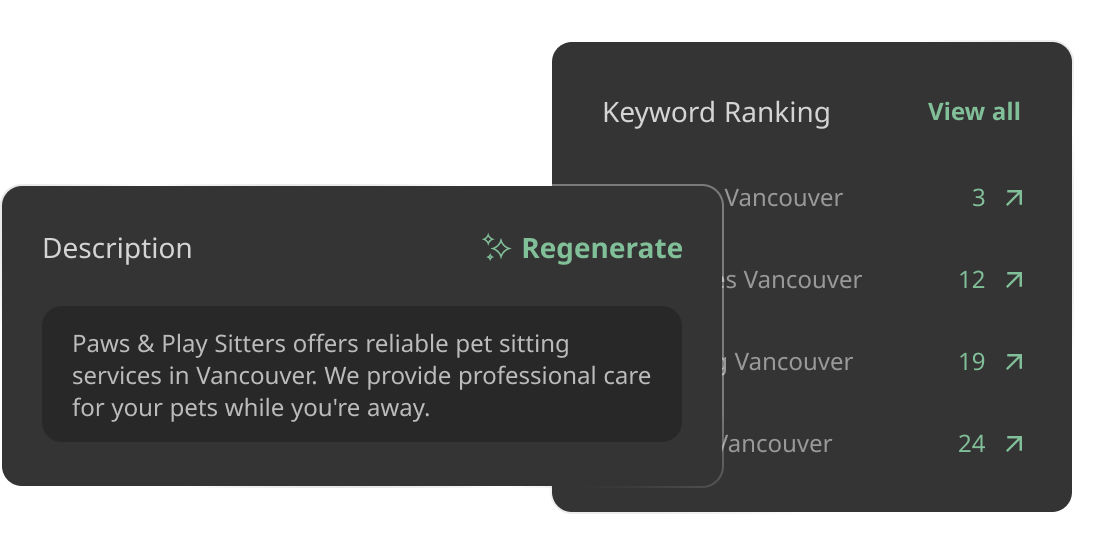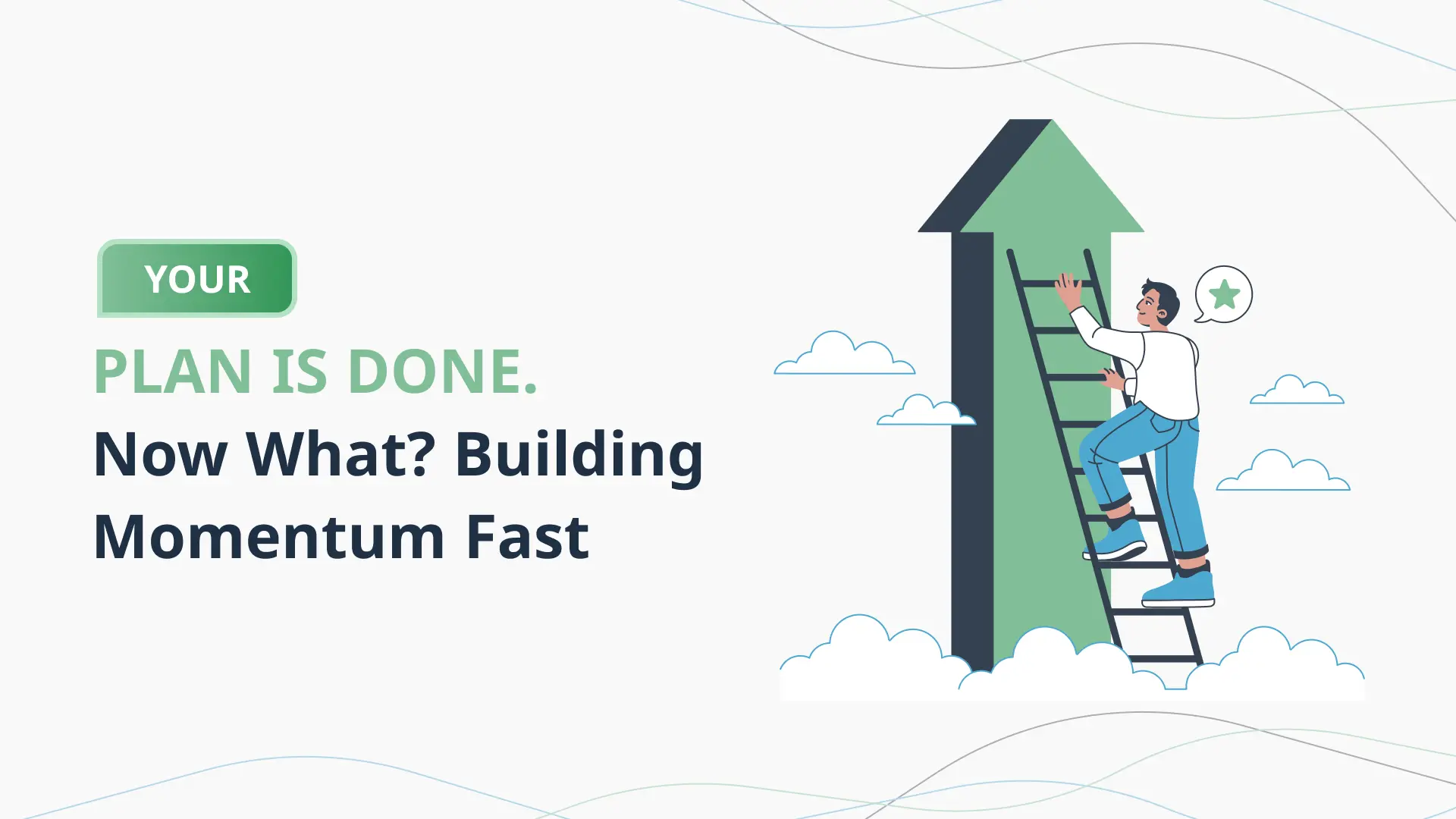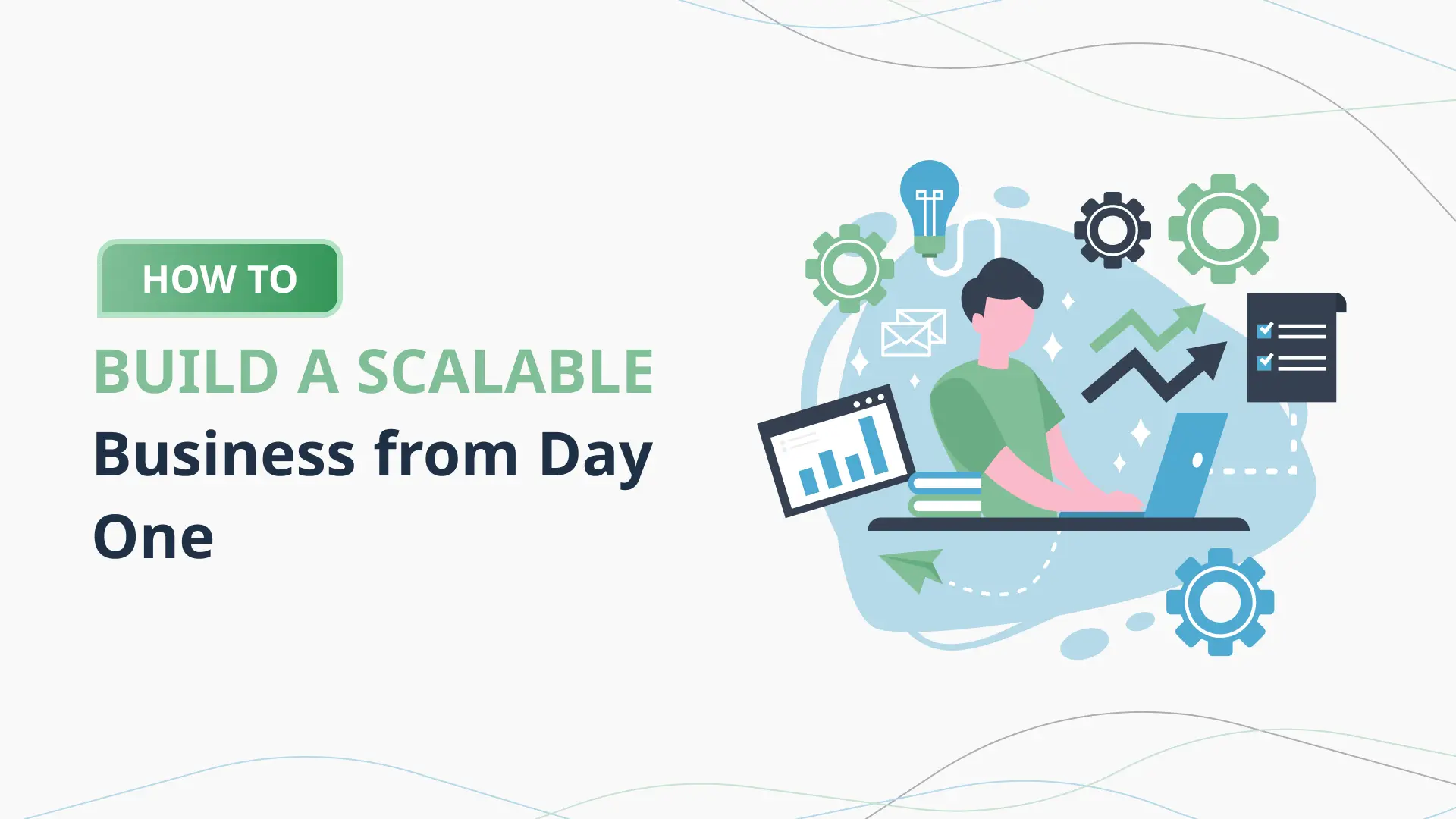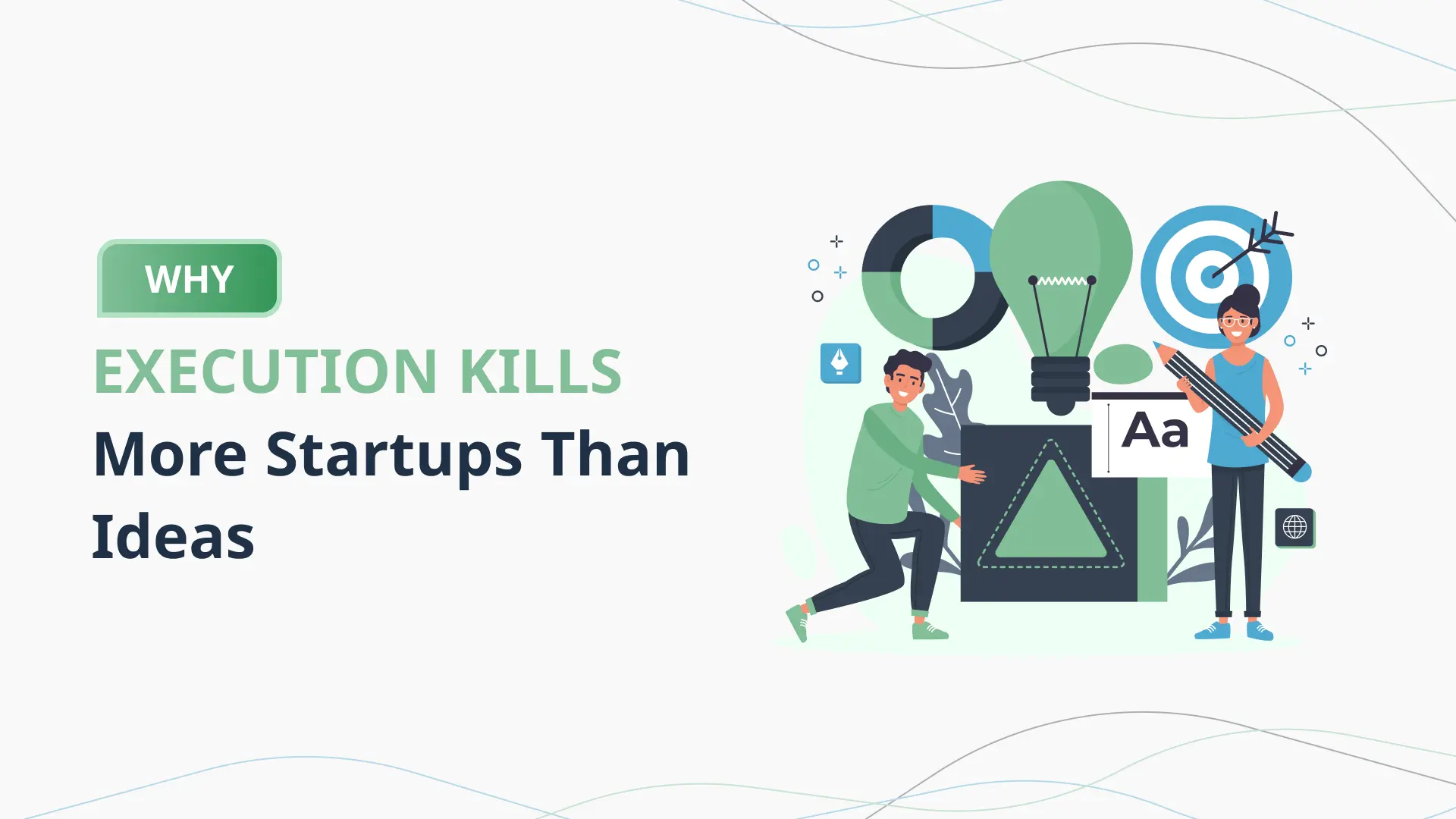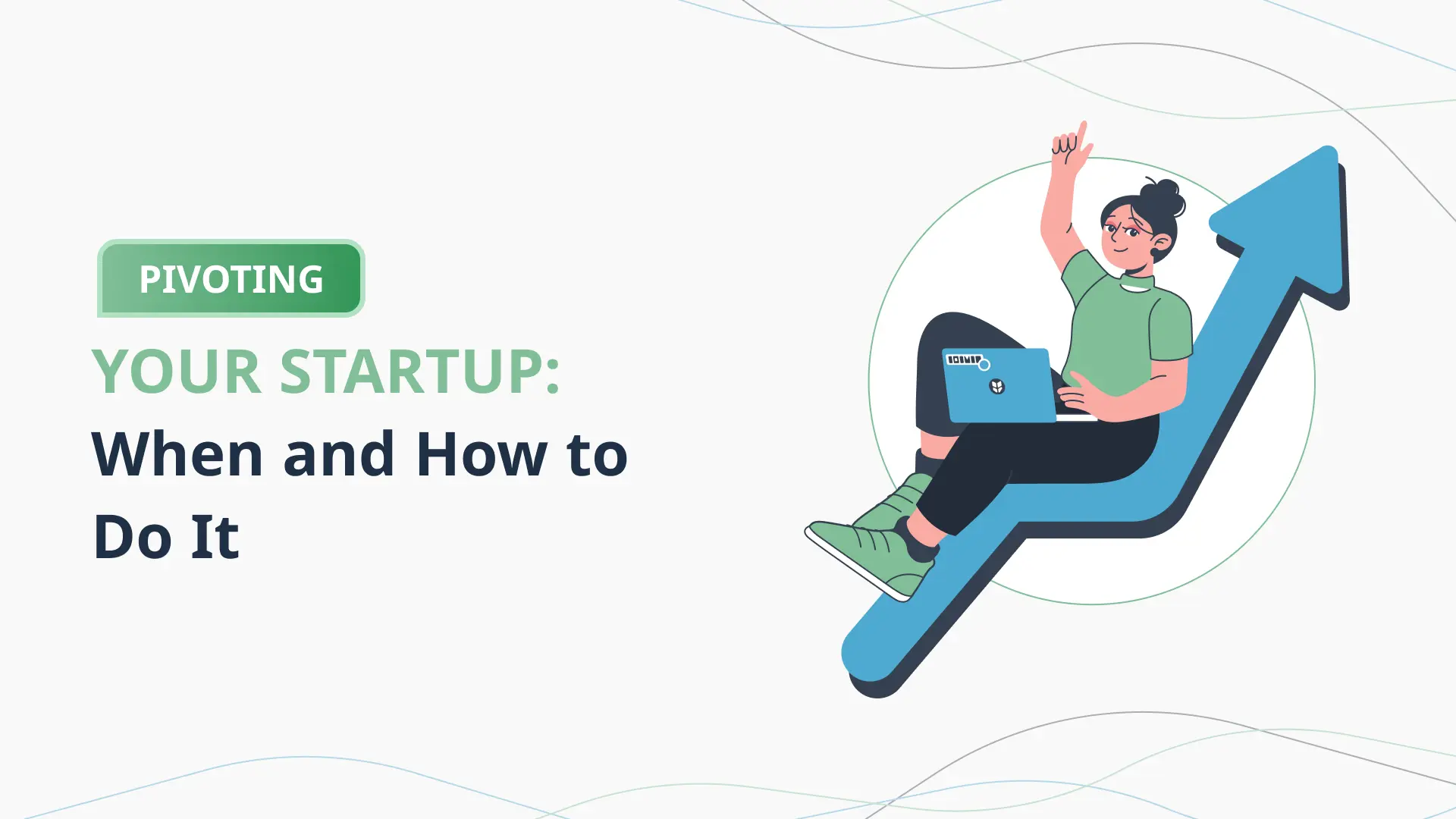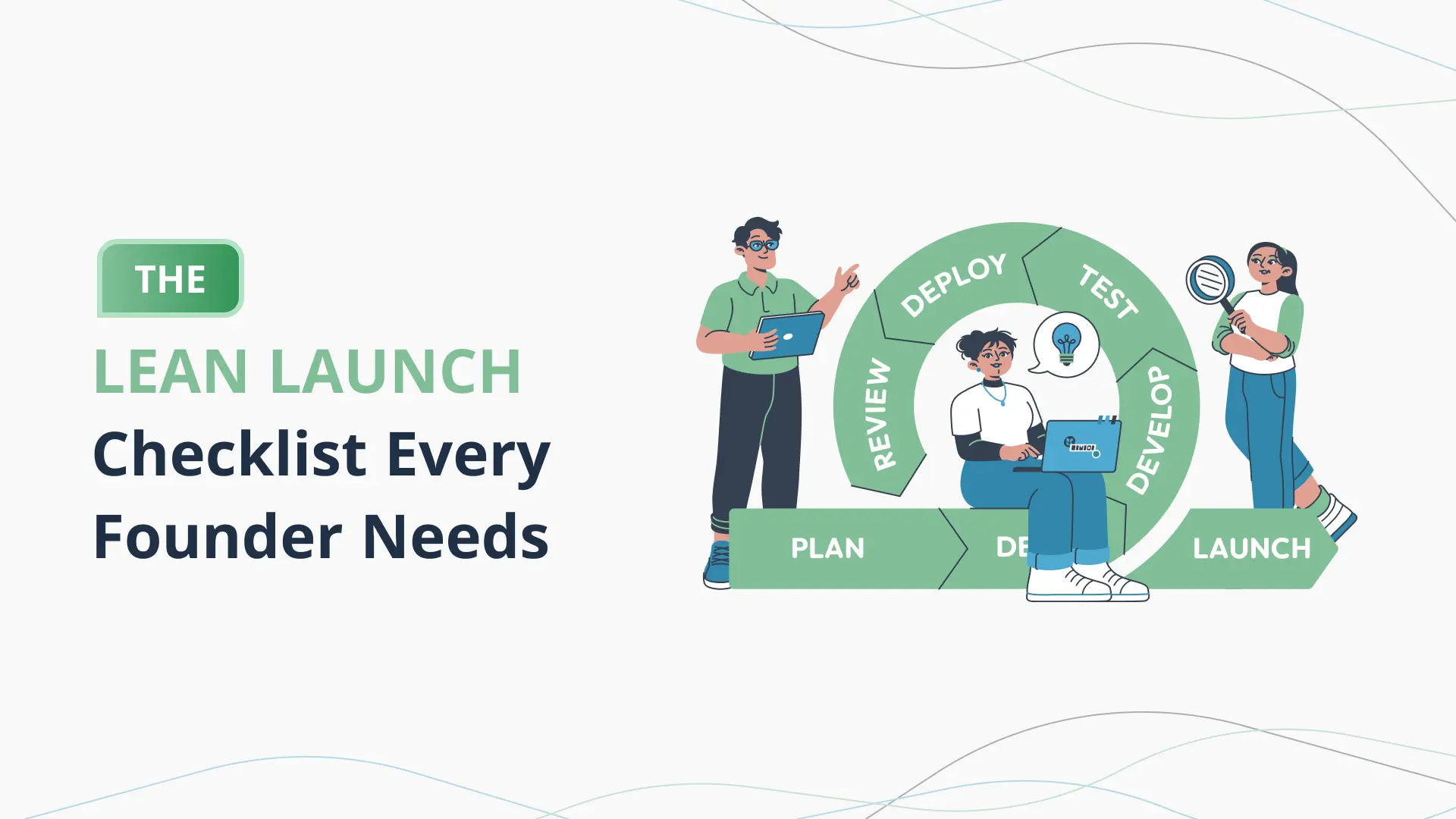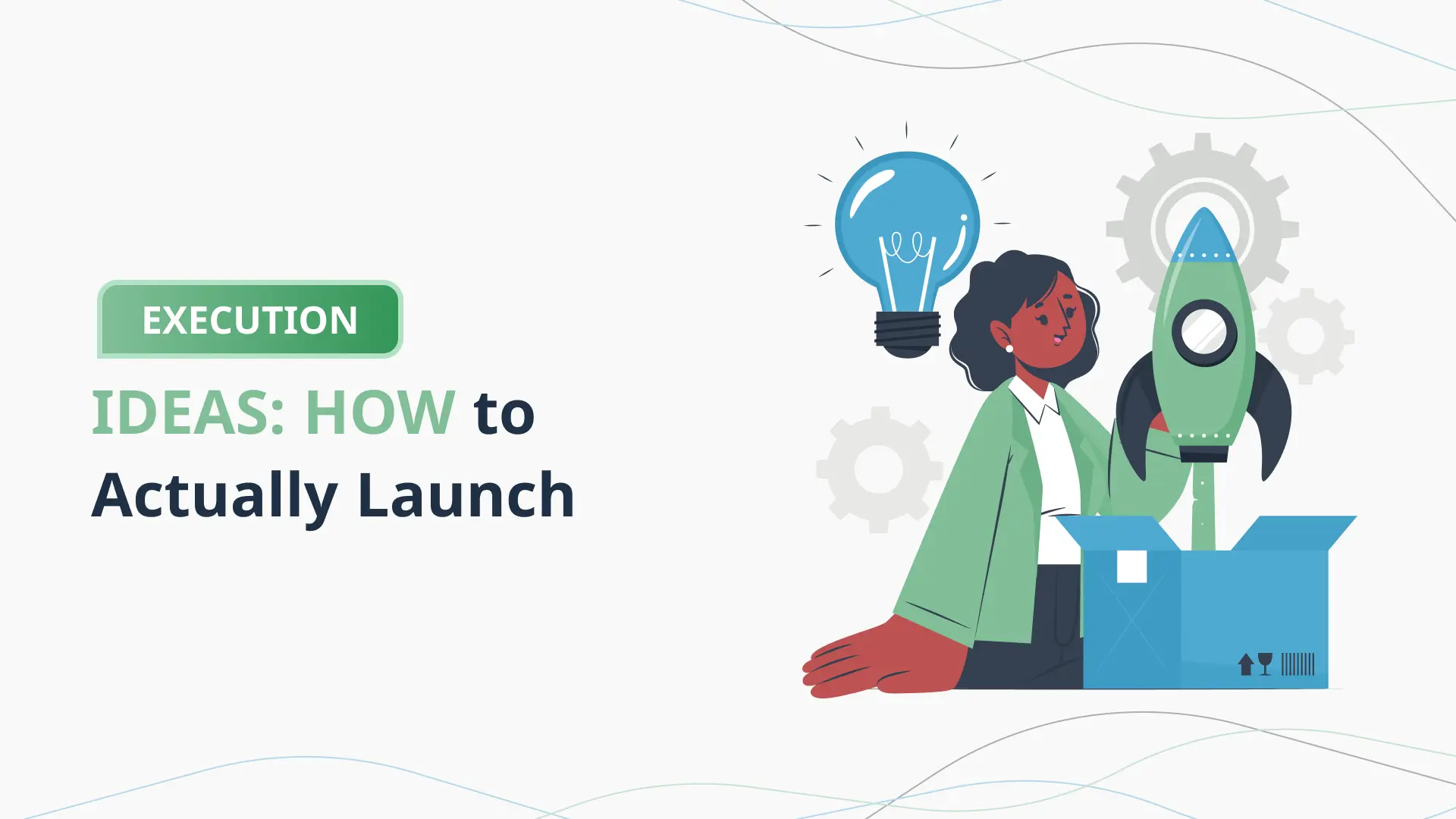How to Tell a Story with Your Pitch Deck

Introduction
You’ve got the startup, the ambition, and maybe even early traction. But when it’s time to pitch to investors, things suddenly feel harder than they should. Why? Because standing out in a sea of similar decks isn’t about having the best product—it’s about telling the best story.
Investors don’t remember numbers; they remember narratives. They don’t buy into spreadsheets; they buy into vision. And the most effective way to turn curiosity into commitment is by building a pitch deck that flows like a story, not a lecture. That’s what this blog is all about—how to use storytelling to turn your pitch from “just another deck” into something unforgettable.
Whether you’re prepping for your first investor meeting or refining your Series A materials, this guide will show you how to structure your deck like a narrative—from setting the stage to presenting your big “aha” moment. We’ll walk through proven storytelling frameworks, step-by-step instructions, and avoidable pitfalls—all designed to help you pitch with clarity, emotion, and purpose.
And if you’re feeling overwhelmed by the process, you’re not alone. Many early-stage founders struggle with turning raw ideas into polished stories. That’s where tools like the PlanVista app come in. As an AI business plan tool and startup planning software, PlanVista helps founders not only validate business ideas but also build investor-ready pitch decks that actually tell a story. Think of it as your pitch deck creator online—with built-in storytelling DNA.
By the end of this blog, you’ll have everything you need to pitch smarter and more strategically. Let’s dive in.
What It Means to Tell a Story with Your Pitch Deck
Let’s be honest—most pitch decks are forgettable. Not because the ideas are bad, but because the presentation is flat. Founders get caught up in trying to “impress” with metrics, features, and buzzwords. But here’s the truth: the most successful pitches aren’t the ones crammed with data. They’re the ones that make people feel something.
Telling a story with your pitch deck means creating a journey. You’re not just laying out information slide by slide—you’re guiding investors through a narrative. Think of it like a movie. Every great film has a structure: a problem, a hero, a conflict, and a resolution. Your pitch deck should do the same.
You start by showing the problem—something real and painful. You introduce your startup as the hero that’s here to solve it. You explain the journey: how you got here, what you’ve built, and why it matters now. Then, you build tension: what’s at stake if this problem goes unsolved? Finally, you offer the resolution: a clear, compelling solution backed by traction, market insights, and vision.
This kind of narrative approach transforms a pitch deck from a business report into a story investors can root for. Studies from Stanford show that stories are remembered 22 times more than facts alone. That means storytelling isn’t just a nice-to-have—it’s a strategic advantage.
Of course, building this kind of narrative takes time. And when you’re knee-deep in product development, customer calls, and financial planning, crafting a powerful story often falls to the bottom of the to-do list.
That’s where using the right startup planning tool can make all the difference. The PlanVista app isn’t just an automated business plan builder—it’s designed to help you shape your pitch around a powerful story. It combines your startup’s data, vision, and value proposition into a cohesive narrative structure. Whether you’re refining your pitch for angel investors or putting together a Series A deck, PlanVista helps you keep the storytelling thread intact.
With its integrated AI business plan tool, PlanVista doesn’t just spit out slides—it helps founders structure a pitch deck that flows, resonates, and lands. It’s like having a narrative consultant built right into your workflow.
And in a world where attention spans are short and competition is fierce, that edge can make all the difference.
How to Craft a Narrative-Driven Pitch Deck
If storytelling is your secret weapon, then structure is your armor. You can have the best story in the world, but without the right flow, it falls flat. A narrative-driven pitch deck follows a rhythm. It guides investors from curiosity to conviction, building interest with each slide.
Let’s break it down step by step.
- Start with the Problem
This is your opening scene. Show investors what’s broken in the world. Make it relatable. Maybe it’s a personal story, or a striking stat. This is your chance to create tension. For example: “Freelancers lose over $2,000 a year on unpaid invoices. We’re here to fix that.” - Present Your Solution
Now introduce your product or service—but keep it simple. Don’t list every feature. Focus on how it improves lives. Your solution should feel like the obvious next step to the problem you just highlighted. - Explain Why Now
Timing is everything. Investors want to know why this moment is the right one. Maybe there’s a shift in consumer behavior, or new regulations. Whatever it is, make the timing feel urgent and logical. - Define the Market Opportunity
This isn’t just about TAM, SAM, and SOM. Tell the story of your customer. Who are they? What do they care about? Instead of dropping abstract numbers, connect your audience to the real people who will use your product. - Show Traction and Validation
This is your credibility check. What have you done so far? Revenue? Users? Pilot programs? Partnerships? Let this section serve as proof that your story is already in motion. - Introduce the Team
Investors bet on people, not just products. Highlight who you are and why you’re the team to make this happen. Keep bios short, but impactful. - Reveal the Vision
What’s the big picture? How does this grow? Where will your startup be in five years? This is your opportunity to show ambition and hint at the broader movement you’re building. - Outline the Business Model and Ask
Now you get practical. How do you make money? What are your margins? And what are you asking for—funding, support, connections? Wrap it all together with clarity.
Creating this kind of pitch deck isn’t just about design—it’s about strategy. It takes time, precision, and storytelling intuition. That’s why so many founders lean on the PlanVista app.
PlanVista isn’t just a business plan generator—it’s a startup planning tool built for storytelling. With its AI-powered business plan tool and financial projections software, it helps founders turn scattered ideas into structured, compelling narratives. Every slide you build is rooted in strategy, not guesswork.
If you want your deck to do more than just inform—to actually inspire—then structure it like a story, and let tools like PlanVista guide the way.
Mistakes Founders Make When Storytelling in Pitch Decks
Even with the best product and a solid market fit, many startup founders struggle to land investor interest. More often than not, the problem isn’t the idea—it’s how they present it. Telling a story with your pitch deck sounds simple, but it’s surprisingly easy to get wrong.
Here are some of the most common storytelling mistakes and how to avoid them.
- Skipping the Problem Setup
Too many decks jump straight into the product. But without clearly defining the problem, your solution feels unnecessary. Investors need to understand why your product exists before they care about what it does. Spend time building empathy. Make the pain point tangible. - Drowning in Data
Metrics are important, but when every slide is packed with charts, graphs, and acronyms, the human element gets lost. A pitch deck isn’t a data dump—it’s a guided journey. Focus on the emotional arc first, then use data to reinforce, not overwhelm. - Over-Explaining Features
Your pitch is not a product demo. Founders often spend too much time listing features instead of emphasizing benefits. What does your product do for people? How does it change their lives or make their jobs easier? That’s what investors care about. - Disconnected Slide Flow
Each slide should feel like a chapter in a book. But many decks feel like a collection of slides made in isolation. The result? Investors feel like they’re piecing together a puzzle. Use transitions, slide headers, and consistent themes to keep the narrative smooth. - No Emotional Hook
Investors are humans. And humans make decisions emotionally, even when they think they’re being logical. The best decks tap into emotion—frustration, inspiration, urgency—before they hit with numbers and projections. - Ignoring the “Why Now?”
Timing matters. If your deck doesn’t make a compelling case for why this is the moment to invest, you risk sounding stale. Tie your story to trends, recent shifts, or new opportunities in your industry.
Now here’s the good news: these mistakes are fixable. With the right framework and tools, even first-time founders can craft a narrative that feels polished and persuasive.
That’s why many startups turn to PlanVista. It’s more than just a business planning software—it’s a storytelling partner. With PlanVista’s AI business plan tool, founders can build pitch decks that flow logically, avoid narrative gaps, and highlight what matters most.
The app helps identify weak spots in your storytelling, suggests better ways to frame your problem-solution narrative, and even integrates your financial projections seamlessly. So your story isn’t just compelling—it’s investor-ready.
If you’ve ever built a deck that looked good on paper but fell flat in the room, chances are one of these mistakes was the culprit. PlanVista helps ensure that doesn’t happen again.
A Real-World Example: How One Founder Won with Storytelling
To see how storytelling transforms a pitch deck, let’s talk about a hypothetical—but very relatable—founder. We’ll call her Leah.
Leah is the founder of a startup focused on reducing food waste in urban grocery stores. Her first pitch deck was clean, data-packed, and filled with bullet points about logistics optimization, cost savings, and market potential. But every pitch she gave left investors nodding politely—and walking away.
Then Leah tried something different. Instead of starting with market size or supply chain mechanics, she began her pitch with a story.
“Two years ago, I was helping my mom clean out her fridge. We threw out half the food. She felt guilty. I felt frustrated. Later that week, I walked past a shelter line two blocks from my apartment. I realized something was broken. That’s why I started this company.”
That 30-second story reframed everything. Investors weren’t just hearing about another logistics app—they were connecting to a real-world problem. Leah’s solution was suddenly more than an algorithm; it was a mission.
From there, her deck walked through the journey: how she and her team built an app that predicts food expiration and redistributes unsold items to food banks in real time. She added testimonials from early users—grocery managers who saved thousands in write-offs and shelters that received unexpected surpluses.
Her financial projections? Still in the deck, but now they served the story. They showed how scaling her solution could help solve a $100B food waste crisis. And her “ask” wasn’t just about capital—it was about joining a cause.
Leah’s pitch deck didn’t change the business model. It changed the delivery. And that change helped her raise a $750,000 seed round within 60 days.
This kind of transformation isn’t rare—it’s what happens when founders rethink their decks as stories, not slide collections. It’s also exactly what tools like PlanVista are designed to support.
The PlanVista app guides you in building a narrative-first pitch, not just filling in a template. It helps early-stage founders validate their business idea, organize it around a clear mission, and develop a pitch deck that connects with investors emotionally and logically.
Using PlanVista’s startup planning tool, Leah could have identified where her deck lacked emotional impact. With its AI-powered business plan generator and integrated pitch deck creator online, she could shape her startup story with confidence.
So whether you’re still outlining your idea or refining your pitch for demo day, remember—investors invest in people, not just numbers. And people remember stories.
Why AI Can Supercharge Your Pitch Storytelling
Building a compelling story into your pitch deck is powerful—but it’s also time-consuming. You have to think through narrative flow, structure, tone, visuals, and make sure every data point supports your overall message. It’s no wonder that many founders, especially early-stage ones, struggle to strike the right balance. That’s where AI can step in as your silent co-founder.
AI-powered tools today are capable of far more than just spell-checking your slides. They can help you shape your story from scratch, offering structure, guidance, and data-backed insights that ensure your pitch resonates from start to finish.
Take PlanVista, for instance. This AI business plan tool is built specifically to support founders in crafting clear, compelling narratives—without spending weeks in PowerPoint or drowning in Google Docs. Whether you’re building a business plan from the ground up or refining your investor pitch, PlanVista’s AI engine adapts to your unique business concept and turns it into an engaging story.
Need to define your market? The app doesn’t just throw numbers at you—it suggests ways to frame your market size in relatable terms. Struggling with your “why now” slide? PlanVista helps identify trends or regulatory shifts that align with your solution. Don’t know how to express your traction? It offers templates and phrasing that connect your data to your broader narrative.
This isn’t just convenient—it’s a competitive edge. With investors receiving dozens of decks weekly, founders using AI tools like PlanVista are able to deliver more polished, emotionally resonant, and structured decks—without spending late nights rewriting the same slide ten times.
And because PlanVista isn’t just a pitch deck creator online, but a full-fledged startup planning tool, you get more than just slides. It also helps you validate your business idea, map your go-to-market, and sync all of that with solid financial projections. That means everything from your problem statement to your bottom line aligns in one seamless story.
The best part? You don’t have to be a professional storyteller. The AI inside PlanVista does the heavy lifting while leaving you in control. You provide the passion and vision—it handles the flow, logic, and polish.
In a world where attention spans are short and first impressions matter more than ever, having AI as your pitch deck partner isn’t just helpful—it’s becoming essential. It allows you to spend less time worrying about format and more time refining your vision.
PlanVista helps founders pitch with clarity, confidence, and a narrative that sticks. If you’re serious about turning your startup into a fundable story, let AI be your storytelling advantage.
How Thousands of Founders Use PlanVista to Pitch Better
One of the hardest parts of building a startup isn’t coming up with the idea—it’s communicating it in a way that others instantly understand and believe in. Whether you’re approaching angel investors, pitching in front of VCs, or sharing your deck with a startup accelerator, how you tell your story matters as much as what you’re building.
This is why thousands of founders are turning to the PlanVista app to get it right the first time. They’re not just using it as a pitch deck creator online—they’re using it to make storytelling the foundation of their investor outreach.
Founders from all over the world, across industries like SaaS, fintech, healthtech, and consumer products, are leveraging PlanVista to build pitch decks that aren’t just informational—they’re inspirational. And that’s because PlanVista is more than a business plan generator. It’s a startup planning tool that guides you through every layer of your story.
Let’s break it down.
With PlanVista, early-stage founders can quickly create an automated business plan that serves as the backbone of their pitch. This isn’t a fill-in-the-blanks template. It’s a smart platform that helps align your market research, problem-solution fit, and customer personas into one cohesive strategy. That strategy naturally flows into your pitch deck, creating a clear, compelling story.
The built-in financial projections software is another major win. No need to juggle spreadsheets or worry about formulas breaking. PlanVista helps you generate investor-ready forecasts that sync with your narrative—so when you show traction or future growth, it actually supports your story instead of confusing it.
And when it comes to the pitch deck itself, PlanVista helps you organize each slide to follow a narrative arc. It guides you from problem to solution, traction to vision, all while keeping your messaging tight, focused, and aligned with what investors expect.
Some founders use it to prepare for pitch competitions. Others rely on it during accelerator demo days. And many simply use it to make sure their story is rock-solid before walking into a fundraising meeting. No matter the use case, PlanVista provides structure without limiting creativity.
The best part? You don’t have to be a seasoned founder or a professional writer to build a great pitch. With PlanVista’s intuitive interface and AI-enhanced recommendations, even first-time entrepreneurs can produce investor-ready materials that strike the right emotional and strategic chords.
In the world of startups, the ability to tell your story clearly and confidently can mean the difference between a quick no and a second meeting. Thousands of founders have discovered that with PlanVista, storytelling doesn’t have to be stressful. It can be the strongest part of your pitch.
Conclusion
Storytelling in your pitch deck isn’t just a creative choice—it’s a strategic one. Investors don’t invest in features, slides, or data points. They invest in belief. They want to believe that your startup solves a real problem, that your team is the one to solve it, and that now is the perfect time to act. And the fastest way to create that belief is through a well-told story.
Throughout this guide, we’ve broken down the elements of a narrative-driven pitch deck—how to start with a powerful problem, frame your solution as the hero, and lead investors through a journey of understanding and excitement. We’ve looked at common mistakes founders make, and how storytelling shifts the entire tone of a pitch. We’ve also seen how one founder used narrative to transform her deck from forgettable to fundable.
But let’s be honest—crafting that perfect story takes time, strategy, and insight. It’s not about winging it or copying someone else’s format. Your story needs to be unique to you, your vision, and your product. That’s why founders are increasingly relying on tools like PlanVista.
With its AI business plan tool, PlanVista makes it easier than ever to shape a startup’s story into an investor-ready narrative. Whether you’re building an automated business plan from scratch or refining your pitch deck slide-by-slide, PlanVista guides you every step of the way. Its intuitive design and built-in startup planning features help you connect the dots between vision, strategy, and storytelling.
Even more powerful? The integrated financial projections software ensures your numbers align with your narrative. You’re not just presenting potential—you’re backing it up with forecasts that make sense and support your story.
In a world where first impressions happen in under five minutes, you can’t afford to be generic. You need to be memorable. You need your pitch deck to tell a story investors can see themselves in.
So, whether you’re just validating your business idea or gearing up for a funding round, PlanVista can help you build a deck that not only looks great—but feels compelling.
Start planning smarter with PlanVista. Try it now—no credit card required.
FAQs
PlanVista is an AI-powered tool that helps startups create business plans and pitch decks quickly.
Yes, it’s designed to support founders at all stages, including idea validation and pre-revenue.
Yes, it offers built-in financial projections software tailored for startups.
Absolutely—PlanVista includes a structured, story-first pitch deck creator online.
No, PlanVista is user-friendly and built for non-technical founders.
